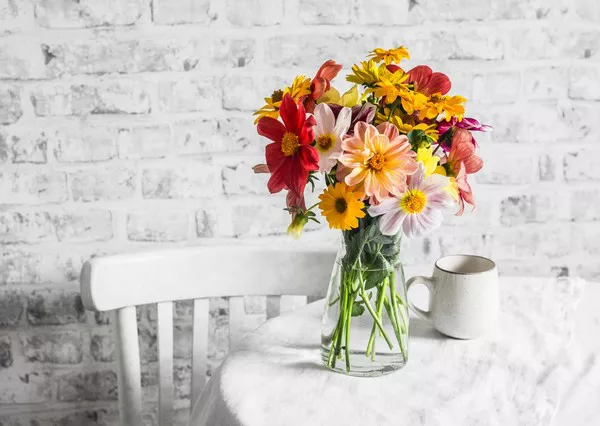Flowers, with their vibrant colors and delicate allure, have been cherished for centuries as symbols of beauty and love. Whether adorning a special event, gracing a tabletop, or offered as tokens of affection, fresh flowers hold an undeniable charm. However, the ephemeral nature of cut flowers often leaves us seeking ways to extend their beauty and longevity. Fortunately, through a blend of science and tradition, several methods have emerged to keep flowers fresh for an extended period. One of the most critical aspects of preserving flowers’ freshness lies in the additives added to water. In this article, we delve into the various substances that can be added to water to maximize the lifespan of cut flowers, along with other factors that influence floral longevity.
The Role of Water: A Lifeline for Flowers
Water is the primary life source for all living organisms, and cut flowers are no exception. Flowers continue to uptake water after being severed from their parent plant, and ensuring that they receive a consistent and clean supply of water is paramount to their endurance. Water serves as the medium through which nutrients are transported to various parts of the flower, maintaining turgidity and overall health.
1. Flower Preservatives: The Classic Elixir
Flower preservatives are a well-established solution for keeping flowers fresh. These commercial products often come in powder or liquid form and are formulated to provide flowers with a balanced mix of nutrients, pH stabilizers, and antimicrobial agents. The nutrients help sustain the flowers, while the pH stabilizers ensure that the water’s acidity remains within the optimal range for nutrient uptake. Additionally, the antimicrobial agents inhibit the growth of bacteria and fungi that can clog the flower’s vascular system.
2. Household Ingredients: Nature’s Nurturers
While commercial flower preservatives are effective, there are several readily available household ingredients that can also play a significant role in extending the lifespan of cut flowers:
2.1. Sugar: A Source of Energy
Adding a small amount of sugar to the water mimics the nutrients that flowers would receive if still attached to the plant. The sugar serves as an energy source, promoting cell respiration and maintaining the flower’s vitality. Be cautious not to overdo it, as excessive sugar can lead to bacterial growth.
2.2. Bleach: Bacterial Banisher
Tiny amounts of bleach can be added to the water to prevent the growth of bacteria and mold. It is crucial to be precise with measurements, as an excessive amount of bleach can damage the flower’s delicate tissues.
2.3. Vinegar: pH Harmony
Vinegar, with its acidic nature, can help adjust the pH of the water, aiding in water uptake and nutrient absorption. Just a few drops of vinegar can have a positive impact without causing harm to the flowers.
2.4. Aspirin: The Aspirin Advantage
Crushing an aspirin tablet and dissolving it in water is thought to reduce the water’s pH while providing a source of salicylates, compounds that have been associated with prolonging the life of cut flowers.
3. Temperature Matters: Chilling and Warming
Flowers have a preferred temperature range for optimum vase life. Placing cut flowers in a cool environment during the night can slow down their metabolic rate, extending their freshness. Conversely, warm water is known to improve water uptake, helping flowers hydrate and maintain their appearance.
4. Water Quality: The Unsung Hero
The quality of the water itself can greatly impact the longevity of cut flowers. Using clean, room-temperature water is crucial. If the water is hard and mineral-rich, using distilled or filtered water can prevent clogging of the flower’s vascular system. Additionally, removing any submerged foliage or debris from the water prevents bacterial growth and decomposition.
5. Pruning and Hydration: Proper Flower Care
The way flowers are treated before being placed in a vase significantly influences their longevity:
5.1. Proper Pruning: Clean Cuts, Fresh Results
When cutting flowers, use sharp, clean tools to create smooth cuts that minimize damage to the plant’s vascular system. Remove any leaves that would be submerged in water to prevent bacterial growth.
5.2. Hydration Hurdle: Submerging Stems
After cutting, immediately place the stems in water. Allowing the stems to remain out of water even for a short time can lead to air embolisms, which hinder water uptake.
6. Frequent Water Changes
Regularly changing the vase water can prevent the accumulation of bacteria and fungal growth. Every two days, empty the vase, wash it thoroughly, trim the stems, and refill it with fresh water mixed with the chosen preservative or additive.
7. Varietal Variations
It’s important to note that different flower varieties have unique requirements for optimal vase life. Some flowers prefer slightly acidic conditions, while others thrive in a more alkaline environment. Researching the specific needs of the flowers you have can significantly improve their longevity.
Conclusion
As the saying goes, “Take time to smell the roses.” By implementing these techniques and additives, you can not only savor the captivating beauty of fresh flowers but also ensure that they grace your space for an extended period. Whether utilizing commercial flower preservatives or tapping into the power of household ingredients, the goal remains the same: to provide cut flowers with the ideal conditions they need to thrive. By understanding the science behind water additives and considering various factors such as temperature, water quality, and proper care, you can master the art of preserving the ephemeral elegance of flowers. So, go ahead and embrace the natural wonder of fresh blooms, armed with the knowledge to keep them vibrant and captivating for as long as possible.


